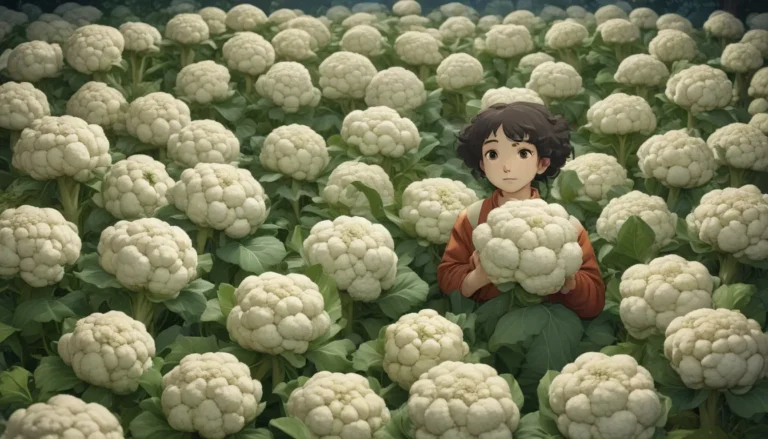The Ultimate Guide to Growing and Caring for Christmas Ferns

If you’re looking to add a festive touch to your garden, consider introducing the enchanting Christmas fern. This evergreen beauty is a perfect addition to both indoor and outdoor spaces, adding a touch of holiday cheer throughout the year.
Christmas ferns are not only visually appealing but also incredibly easy to care for, making them a popular choice among gardeners. With their glossy dark green leaves and charming appearance, these plants are a delightful addition to any landscape.
In this comprehensive guide, we will explore everything you need to know about Christmas ferns, from their cultivation and history to propagation and maintenance. Whether you’re a seasoned gardener or a novice plant enthusiast, this article will provide valuable information to help you grow and care for your Christmas ferns properly.
Let’s dive in and discover the fascinating world of Polystichum acrostichoides!
Understanding Christmas Ferns
The Christmas fern, also known as the Christmas shield fern, canker brake, or evergreen wood fern, belongs to the Dryopteridaceae family. This resilient plant is native to the eastern United States and Canada, thriving in a variety of habitats such as swamps, woodlands, and stream banks.
With its fountain-like growth habit and leathery, dark green leaves, the Christmas fern adds a touch of elegance to any garden. Unlike other fern species that tend to spread aggressively, the Christmas fern forms tidy clumps, making it a perfect choice for border plantings or erosion control.
One distinguishing feature of the Christmas fern is its unique leaf structure. The sawtoothed margins and mitten-like appearance of the leaflets give this plant its festive name, making it a holiday favorite among gardeners.
Cultivation and History
The origins of the Christmas fern can be traced back millions of years to the Cretaceous period. Indigenous Americans and early settlers used this plant for medicinal and decorative purposes, appreciating its versatile nature and aesthetic appeal.
In the late 19th century, the Christmas fern gained popularity as a holiday decoration, earning its festive name due to its evergreen foliage. Today, this plant continues to be a cherished addition to gardens and floral arrangements, combining beauty and resilience in a single package.
Propagation
If you’re looking to propagate your Christmas ferns, you have several options to choose from. Whether you prefer sowing spores, dividing existing plants, or transplanting nursery specimens, there are various methods to suit your needs.
From collecting spores to nurturing prothalli and finally transplanting young ferns, the propagation process is both fascinating and rewarding. By following the steps outlined in this guide, you can successfully propagate your Christmas ferns and expand your garden collection with ease.
How to Grow Christmas Ferns
Growing and caring for Christmas ferns is relatively straightforward, provided you meet their basic requirements. By creating the right environment and providing proper maintenance, you can ensure that your plants thrive and flourish throughout the year.
Climate and Exposure Requirements
Christmas ferns prefer partial to full shade, making them an excellent choice for shady areas in your garden. They are cold-tolerant and can withstand a wide range of temperatures, making them suitable for USDA Hardiness Zones 3 to 9.
Additionally, Christmas ferns are resistant to deer and other common pests, making them a low-maintenance option for gardeners. By choosing a suitable location with the right exposure and climate conditions, you can create a thriving habitat for your Christmas ferns.
Soil Requirements
Proper soil drainage and acidity are essential for the health of Christmas ferns. These plants thrive in well-draining, slightly acidic soil with a pH range of 5.0 to 6.5. Adding compost or organic matter can help improve soil fertility and moisture retention, ensuring optimal growth for your ferns.
Irrigation and Fertilizer Requirements
Keeping your Christmas ferns moist but not waterlogged is crucial for their health. Water deeply whenever the soil surface feels dry to the touch, especially during dry spells or extreme heat. While in-ground plantings may not require additional fertilizer, applying a balanced, slow-release granular fertilizer in spring can provide a nutrient boost for your ferns.
For potted plants, using a suitable potting mix and regular watering can help maintain soil moisture and nutrient levels. Consider using a water-soluble fertilizer or liquid plant food to feed your indoor ferns and promote healthy growth throughout the year.
Tips for Growing and Maintaining Christmas Ferns
- Plant your Christmas ferns in full to partial shade for optimal growth.
- Ensure that the soil is well-draining, slightly acidic, and fertile to support healthy root development.
- Water deeply whenever the soil surface is dry, and avoid overwatering to prevent root rot.
- Mulch around the base of your outdoor ferns to conserve moisture and protect the roots.
- Prune broken or dead fronds as needed to maintain the appearance of your ferns.
- Divide or repot mature plants if the center starts to die back, ensuring continued growth and vitality.
By following these growing tips and maintenance practices, you can keep your Christmas ferns healthy and vibrant throughout the year. Whether you’re a beginner or experienced gardener, these guidelines will help you cultivate beautiful and thriving ferns in your garden.
Where to Buy Christmas Ferns
If you’re ready to add Christmas ferns to your garden, there are several options available for purchasing these plants. Specialty garden centers, nurseries, and online vendors offer a variety of sizes and options to suit your needs.
Nature Hills Nursery and Hirt’s Gardens are excellent sources for Christmas ferns in different sizes and formats, from small pots to mature specimens. Additionally, local plant swaps and horticultural events may provide opportunities to acquire Christmas ferns through trades or exchanges, making it a fun and interactive way to connect with other gardeners.
Managing Pests and Diseases
Maintaining the health and vigor of your Christmas ferns is essential for preventing common pests and diseases. By following proper gardening practices and employing preventive measures, you can protect your plants from potential threats.
Common Pests
While Christmas ferns are resistant to deer and herbivores, they may still attract aphids, caterpillars, and mealybugs. Using natural predators, physical removal, or horticultural oils can help control these pests and prevent damage to your ferns.
Disease Prevention
Practicing good hygiene and ensuring that your plants are disease-free can help prevent common diseases such as crown rot and sooty mold. By maintaining proper soil drainage and avoiding overwatering, you can create a healthy environment for your ferns and reduce the risk of infections.
Overall, maintaining robust health and implementing preventive strategies are key to managing pests and diseases in your Christmas ferns. By staying vigilant and addressing any issues promptly, you can ensure the long-term health and vitality of your plants.
Best Uses for Christmas Ferns
Christmas ferns are versatile plants that can be used in a variety of ways in your garden. Whether you’re looking to add them to border plantings, ground cover, or floral arrangements, Christmas ferns offer a range of benefits and applications.
Creative Uses
- Use individual fronds in wreaths, swags, and floral arrangements for festive decorations.
- Incorporate Christmas ferns as accent plants or borders to add color and texture to your garden.
- Utilize their dark green foliage as a backdrop for other brightly colored flowers or plants in your landscape design.
- Plant them along slopes or erosion-prone areas to stabilize the soil and prevent erosion.
With their elegant appearance and versatile nature, Christmas ferns are a valuable addition to any garden. By exploring creative uses and applications for these plants, you can enhance the beauty and functionality of your outdoor space while enjoying the festive charm of these delightful ferns.
Conclusion
In conclusion, Christmas ferns are a delightful addition to any garden, offering beauty, resilience, and versatility to gardeners of all levels. By understanding their unique characteristics, cultivation requirements, and maintenance needs, you can successfully grow and care for these charming plants throughout the year.
Whether you’re looking to propagate your ferns, enhance your garden design, or manage pests and diseases, this comprehensive guide provides valuable information and tips to support your gardening endeavors. With a little care and attention, you can enjoy the beauty and elegance of Christmas ferns in your garden for years to come.
If you have any questions, insights, or experiences to share about growing Christmas ferns, feel free to join the conversation in the comments below. Happy gardening, and may your Christmas ferns bring joy and beauty to your garden!
Disclaimer: This article provides educational information and gardening tips for growing Christmas ferns. Product recommendations and additional resources are offered for reference purposes, and readers are encouraged to conduct further research and seek professional advice as needed. All rights reserved.





